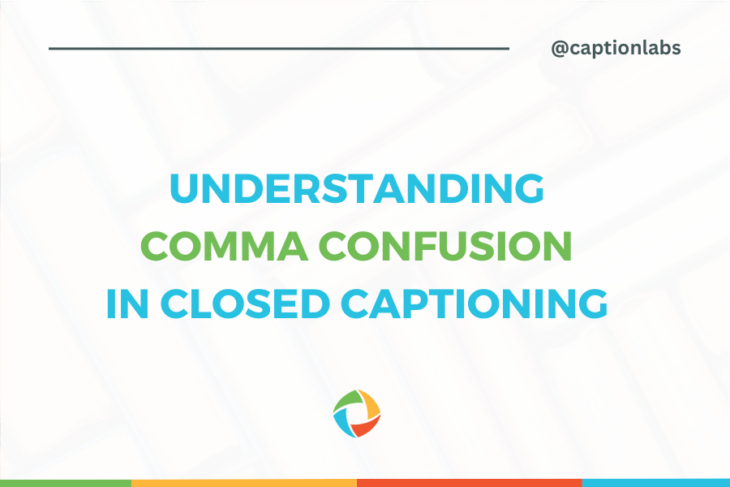Understanding Comma Confusion in Closed Captioning
Comma confusion is a common problem in the English language that can have significant implications, especially for closed captioning. Many people do not fully understand the proper usage of commas, which can lead to incorrect punctuation in captions. In this blog post, we will discuss what comma confusion is, how it can affect closed captioning, and what steps can be taken to avoid it.
What is Comma Confusion?
Comma confusion occurs when people use commas incorrectly or inappropriately. This problem arises because people are unsure of the correct usage of commas, or they do not understand the purpose of commas in a sentence. As a result, they may use commas in places where they are not needed or omit them in places where they are necessary.
How Does It Affect Closed Captioning?
Comma confusion can have a significant impact on the accuracy and clarity of closed captioning. Closed captions are essential for people who are deaf or hard of hearing to access media content, including videos and movies. Incorrect punctuation in captions can cause confusion, misinterpretation, and even change the meaning of a sentence, which can result in a loss of information for viewers. For instance, consider how a missing comma in the sentence “Let’s eat, grandma!” could lead to a misinterpretation as an instruction to eat grandma. However, with a comma, it becomes a friendly invitation to have a meal with Grandma. This example illustrates how a misplaced comma can completely change the meaning of a sentence.
How to Avoid Comma Confusion in Closed Captioning?
To avoid comma confusion in closed captioning, it is crucial to understand the rules of comma usage. The following are some general rules for using commas:
1. Use a comma to separate items in a list.
2. Use a comma before a coordinating conjunction (and, but, or, nor, for, yet, so) in a compound sentence.
3. Use a comma to set off nonessential clauses or phrases.
4. Use a comma after an introductory phrase or clause.
5. Do not use a comma to separate a subject from its verb.
To ensure the accuracy and clarity of closed captioning, it is essential to have skilled professionals who understand the rules of punctuation and can apply them appropriately. They can make sure that the captions accurately convey the intended meaning of the dialogue, making the content accessible to all viewers, including those who are deaf or hard of hearing.
Comma confusion is a serious issue in closed captioning that can significantly impact the accuracy and clarity of the captions. As a result, it’s essential to work with a professional closed captioning service provider like CaptionLabs that has experienced and skilled captioners who understand the importance of proper punctuation and grammar in closed captioning. If you need closed captioning services for your media content, don’t hesitate to request a quote from us today.

Jake Drown
Jake Drown is our Vice President and oversees our day-to-day operations. Jake thrives on solving our customer’s problems - if you’re stuck at a roadblock, he’s the one you need to call. As a jack-of-all-trades, you never know what you will find Jake doing on the weekends! He and his family are seasoned travelers and can be found anywhere from a mountain top, a forest, a beach, or even a corn field!


